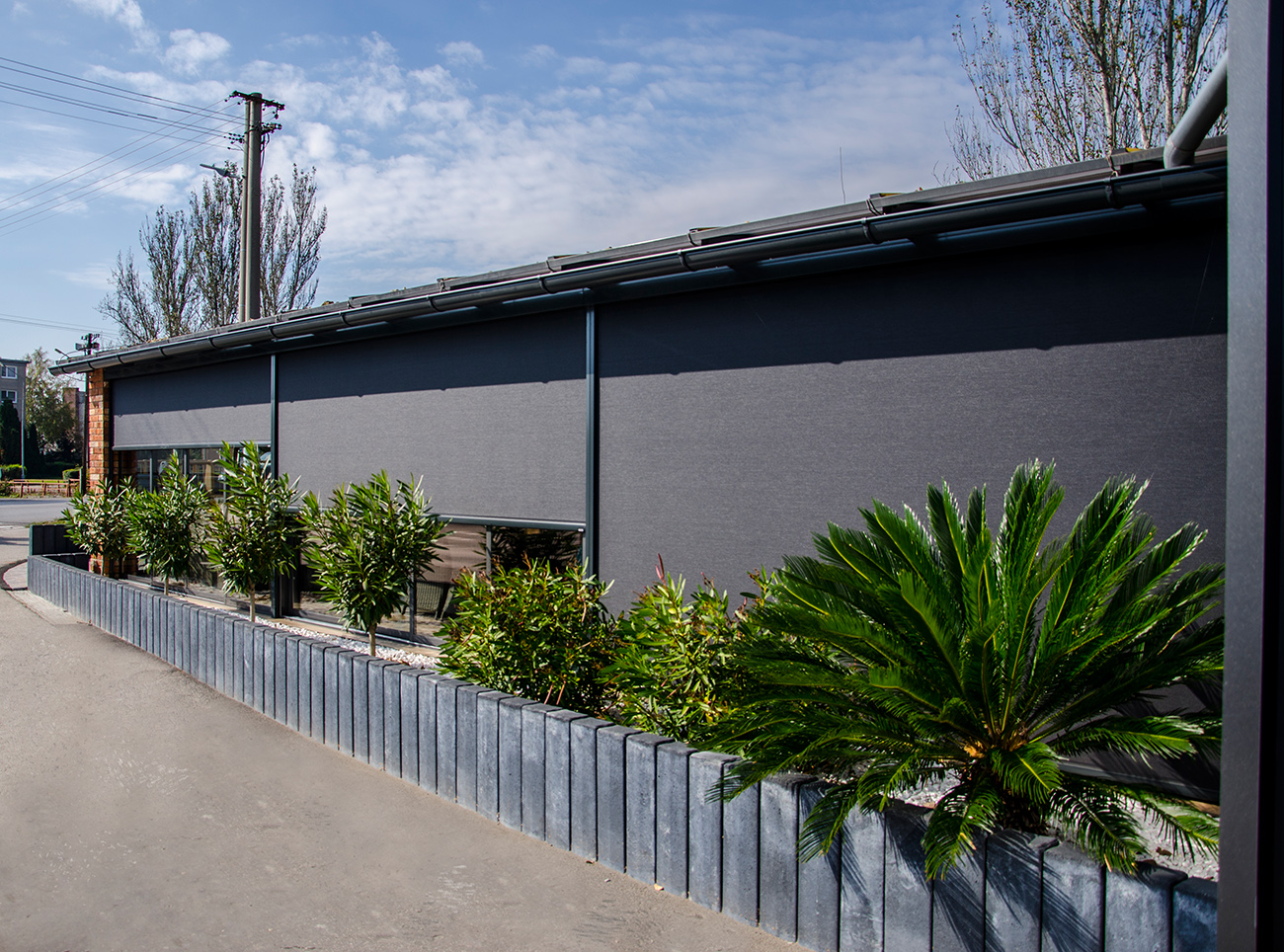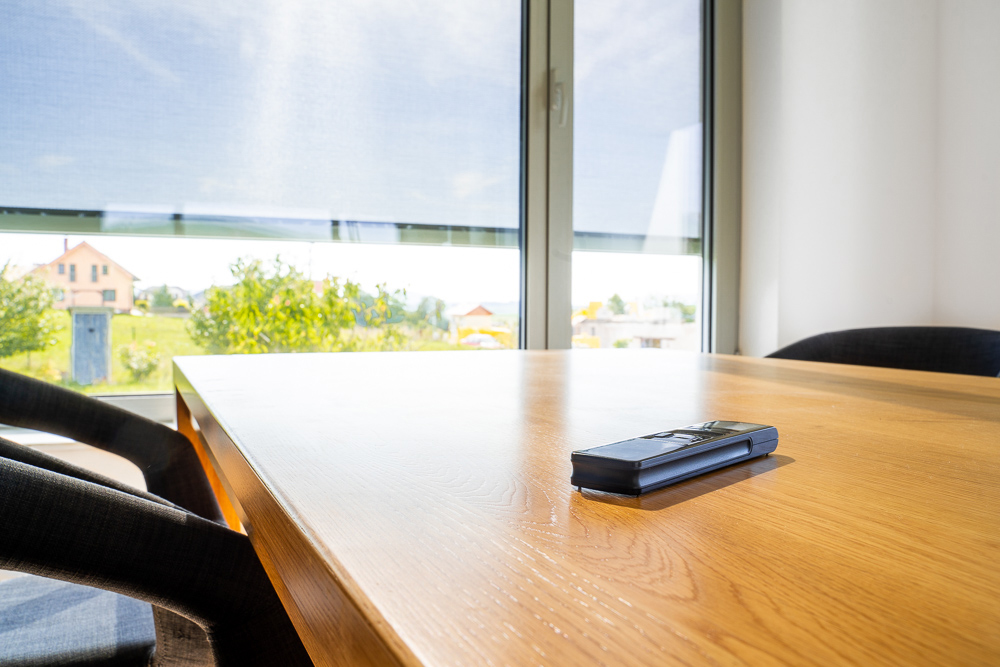
Minimalist screen decorates, shades, and allows light to pass through
 |
The screen is a special textile roller blind, most commonly placed on the outside of windows, where it captures the largest share of radiant energy from the sun. It minimizes the penetration of thermal energy into the interior while allowing a view outside and the entry of light or fresh air inside. It is a shade that has extraordinary architectural potential.
The screen – in our case, a product of the Minirol brand – is a shading element that, as part of a physical concept addressing light, air, and energy in buildings, enables effective thermal protection of the building both in summer and winter. When placed on the outside of the window, it reflects a large portion of solar radiation while allowing some light to pass inside. The remaining energy it absorbs is then emitted as heat both outward and into the interior. Thanks to this process, the screen reduces summer temperatures in the room by 80 to 95 percent while maintaining visual comfort. Thus, it reduces cooling costs for the house by up to 58 percent. In winter, it acts as a thermal insulation window element while still allowing a view out the window.
Material and Color Affect the Intensity of Translucence and the Degree of Heat Absorption
Thermal comfort in the room is therefore preserved thanks to the screen. However, the light transmittance varies among individual fabrics. The material forming the screen is made from glass or polyester fibers and is coated with a layer of PVC. A blackout type can also be chosen. If you prefer maximum year-round access to daylight, choose a screen with the highest light transmittance factor, which is specified in the parameter tables as the Tv value (light transmittance coefficient). Such a solution is suitable, for example, in classrooms (recommended lighting level 400 lux), offices (500 lux), and especially in studios (1000 lux). Besides the material, the degree of translucence is also affected by color. Darker shades reduce the level of lighting. Minirol screens are available in all RAL color samples as standard.

If you choose a light color, it will – unlike dark shades – also heat up less. It will not therefore transfer thermal energy from the sun to the glass filling of the window or to the interior by radiation. Compared to interior shading solutions, which only serve as protection against glare, it helps maintain thermal comfort in the house. On the other hand, darker screens provide better visual contact with the exterior (they allow better visibility outside), and it is easier to regulate the level of glare (it’s easier to reduce brightness contrasts between different areas).
Outstanding Design
Moreover, it cannot be overlooked that the final execution of the screens provides the building, in addition to excellent thermal energy parameters, with a sophisticated minimalist design. It is an architectural element that gives the building a unique face, dynamics, and charm. Control can be chosen as mechanical (manual) or electrical. The screen can also be connected to smart home systems and can operate autonomously based on data from solar, wind, and other sensors. The box into which the screen is rolled is made of aluminum and can be recessed into the wall.Summary of Facts about Exterior Screens:
- They improve the thermal insulation ability of the window – in summer, they shade the window and protect the house from a flood of solar radiation, especially from its thermal component, while in winter, they prevent the ingress of cold.
- They allow the right amount of sunlight to pass through and ensure good interior visibility.
- They prevent insect entry both day and night; screens can be left lowered while ventilating.
- During the day, they provide a view out the window.
- They allow controlling the amount of sunlight according to current needs.
- They reduce electricity consumption (reducing the need for air conditioning or heating systems).
 |
Author: Helena Široká
The English translation is powered by AI tool. Switch to Czech to view the original text source.
0 comments
add comment











